Python的DataFrame基础使用
Posted wind-flies
tags:
篇首语:本文由小常识网(cha138.com)小编为大家整理,主要介绍了Python的DataFrame基础使用相关的知识,希望对你有一定的参考价值。
1.使用DataFrame建表的三种方式
import numpy as np import pandas as pd test_1 = pd.DataFrame(np.random.rand(4, 4), index=list(‘ABCD‘), columns=list(‘1234‘)) # 产生随机数,index行,columns列 test_2 = pd.DataFrame([[1, 2, 3, 4], [2, 3, 4, 5], [3, 4, 5, 6], [4, 5, 6, 7]], index=list(‘1234‘), columns=list(‘ABCD‘)) # 自己输入 dic1 = ‘name‘: [‘小明‘, ‘小红‘, ‘狗蛋‘, ‘铁柱‘], ‘age‘: [17, 20, 5, 40], ‘sex‘: [‘男‘, ‘女‘, ‘女‘, ‘男‘] # 使用字典进行输入 test_3 = pd.DataFrame(dic1, index=list(‘ABCD‘)) print(test_1, ‘\\n‘) print(test_2, ‘\\n‘) print(test_3, ‘\\n‘)
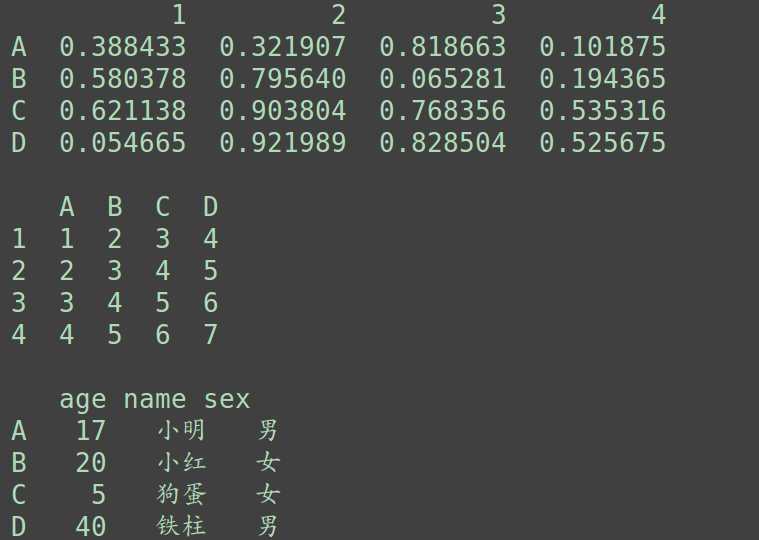
2.查看数据情况
print(‘查看数据类型:\\n‘, test_3.dtypes, ‘\\n‘) print(‘看前两行:\\n‘, test_3.head(2), ‘\\n‘) print(‘看后两行:\\n‘, test_3.tail(2), ‘\\n‘) print(‘index看行名:\\n‘, test_3.index, ‘\\n‘) print(‘columns看行名:\\n‘, test_3.columns, ‘\\n‘)
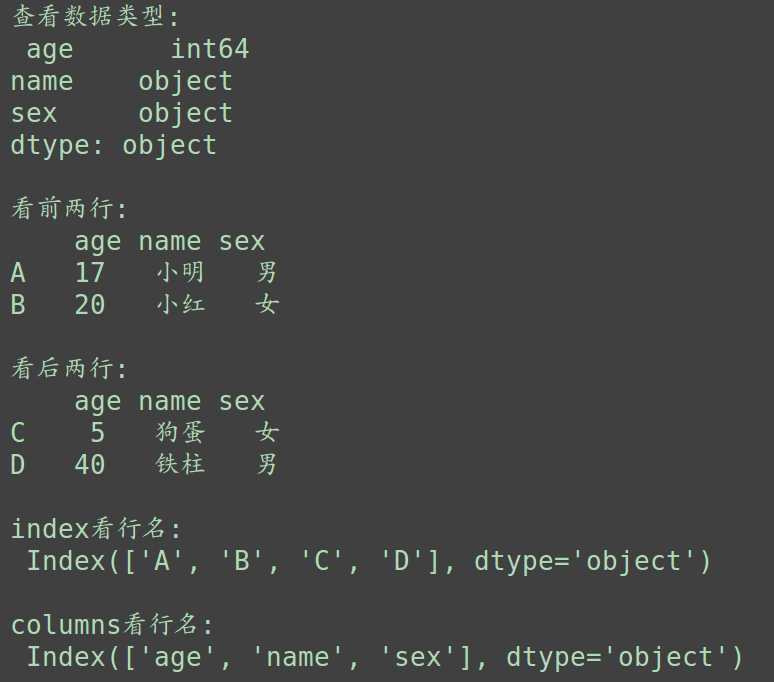
3.数据检索
print(‘看所有数据值:\\n‘, test_3.values, ‘\\n‘) print(‘查看name列的数据:\\n‘, test_3[‘name‘].values, ‘\\n‘) print(‘使用loc进行行检索:\\n‘, test_3.loc[‘A‘], ‘\\n‘) print(‘使用iloc进行行检索:\\n‘, test_3.iloc[0], ‘\\n‘) print(‘直接使用名字进行列检索,但不适合行检索:\\n‘, test_3[‘name‘], ‘\\n‘)
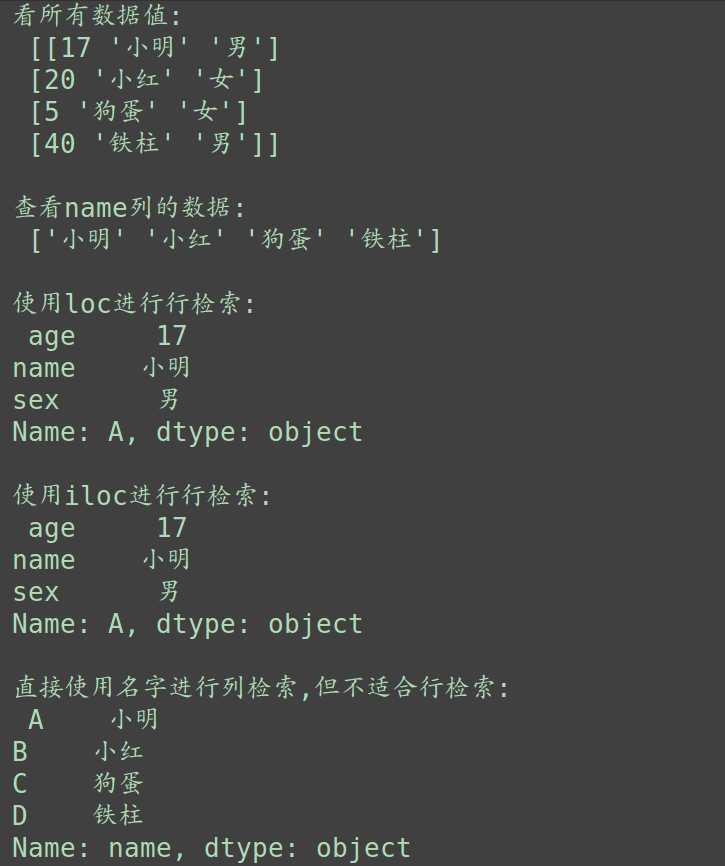
4.对表进行描述
print(‘对表进行描述:\\n‘, test_3.describe(), ‘\\n‘)
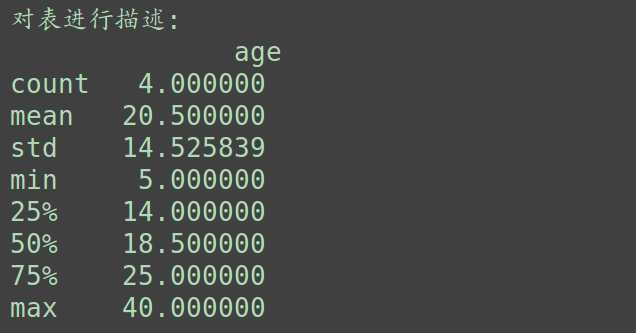
5.表的合并
print(‘进行转置:\\n‘, test_3.T, ‘\\n‘) print(‘查看行数:‘, test_3.shape[0], ‘查看列数:‘, test_3.shape[1], ‘\\n‘) # print(‘对表进行描述:\\n‘, test_3.describe(), ‘\\n‘) test_3.insert(3, ‘skin‘, [‘b‘, ‘w‘, ‘w‘, ‘y‘]) print(‘对表用insert进行插入:\\n‘, test_3, ‘\\n‘) test_4 = pd.DataFrame([‘T‘, ‘E‘, ‘W‘, ‘A‘], index=list(‘ABCD‘), columns=list(‘N‘)) # print(‘新建的DataFrame:\\n‘, test_4, ‘\\n‘) print(‘合并DataFrame:\\n‘, test_3.join(test_4), ‘\\n‘)
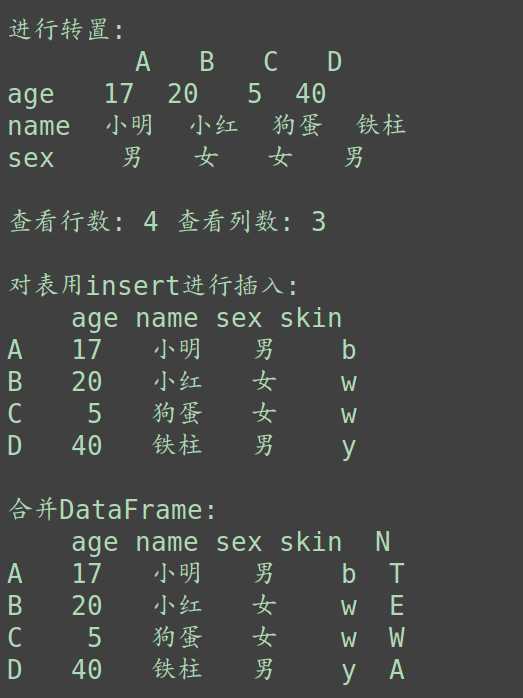
以上是关于Python的DataFrame基础使用的主要内容,如果未能解决你的问题,请参考以下文章